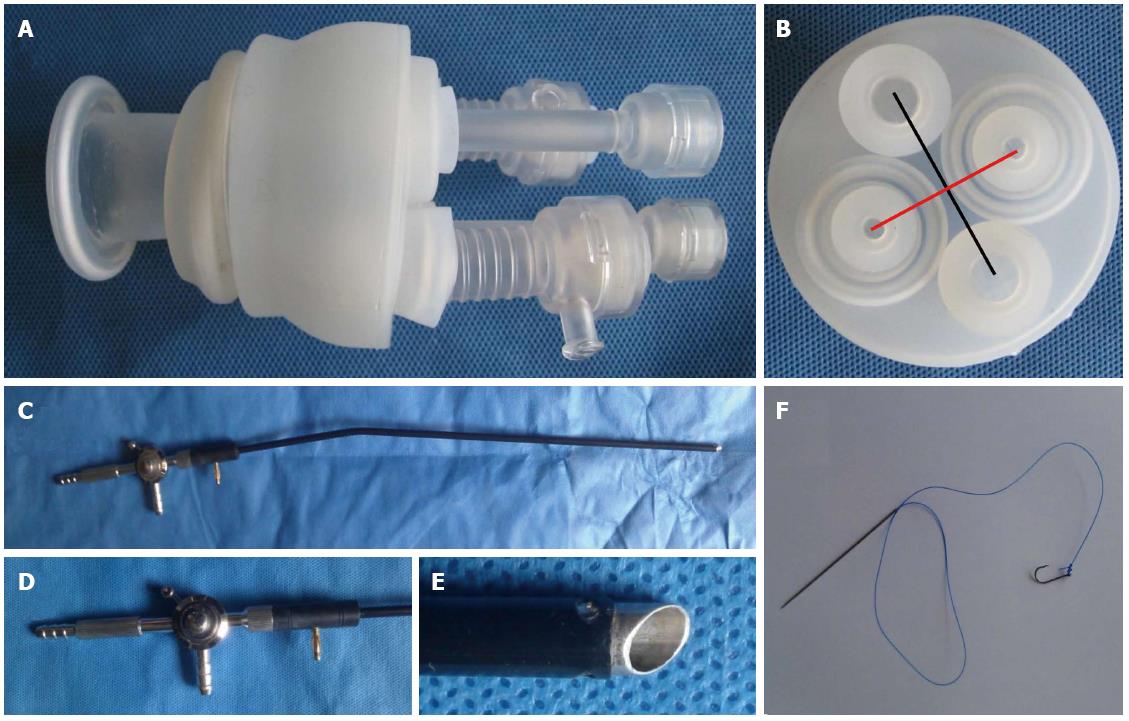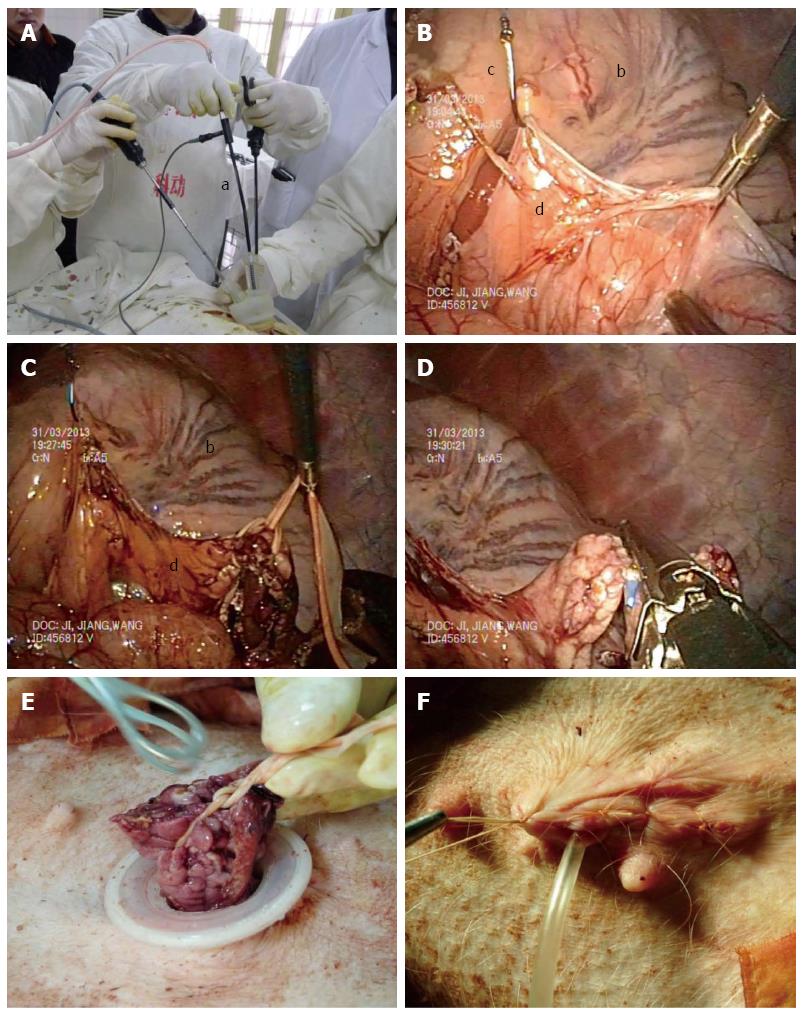Copyright
©2014 Baishideng Publishing Group Inc.
World J Gastroenterol. Jun 14, 2014; 20(22): 6878-6883
Published online Jun 14, 2014. doi: 10.3748/wjg.v20.i22.6878
Published online Jun 14, 2014. doi: 10.3748/wjg.v20.i22.6878
Figure 1 Special instruments used in this study.
A: The novel flexible multichannel port set (KangMei, JiangSu, China) includes three components, a wound retractor and valve as well as trocars; B: The valve component has four channels, with approximately 4.5 cm (black line) between the two 10-mm channels and 3.5 cm (red line) between the two 5-mm channels; C: The curved laparoscopic multifunctional operative device (C-LMOD) bent near the handle at an angle of 20°-30°; D: The handle of the C-LMOD controlling the douching and absorbing conduits by a triplet, with an electrocautery touch-point connected to the C-LMOD lumen; E: The tip of the C-LMOD with a slope; F: The fish hook retractor with a straight needle to penetrate the abdominal wall and a fish hook to retract the target.
Figure 2 Example operation of laparoendoscopic single-site spleen-preserving distal pancreatectomy.
A: An inverted-pyramid operative status with an articulating grasper, an EndoEye™ laparoscope and a curved laparoscopic multifunctional operative device (C-LMOD); B: Exposure of the pancreas by fish hook retractors suspending the greater curvature of the stomach and the pancreatic capsule; C: Dissection of a tunnel beneath the body of the pancreas and lift it by a flexible sling; D: Transection of the pancreas by using a 60-mm ENDO GIA stapler; E: Extraction of the distal pancreas through the cannula; F: Closure of the incision. a: C-LMOD; b: Stomach; c: Fish hook retraction; d: Pancreas.
- Citation: Wang D, Ji ZL, Jiang XH, Wang JM, Tan YY, Wang Y, Wen YZ. Laparoendoscopic single-site distal pancreatectomy in pigs. World J Gastroenterol 2014; 20(22): 6878-6883
- URL: https://www.wjgnet.com/1007-9327/full/v20/i22/6878.htm
- DOI: https://dx.doi.org/10.3748/wjg.v20.i22.6878










